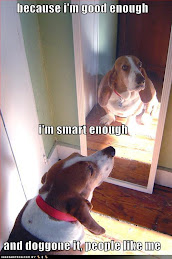As I was working through some emotions of my own this morning while eating my breakfast, I wrote an email to my ex, explaining some ideas I had about conflict. And the feeling of being at conflict within yourself.
I won't share the details here, but my overall assumption was that there is an opposing force trapped inside, and until those two forces merge, conflict will continue. The Chinese philosophy of the Yin and Yang (the dark versus the light as it is sometimes called) was a clear symbol to me that explains it well. Here is the wikipedia link explaining more about the Yin and Yang.
The idea is that they are two opposing forces, yet also complementary. You actually need the Yin to have a Yang, and vice verse. The true path and clarity can be found when you are able to balance the strengths and weaknesses of both.
Some believe that we are born with a natural ability in life to find balance, but perception sometimes disorients our mind to what is really clear. The term "clear as mud" is used to sometimes joke about how things aren't clear.... but I like the "can't see the trees because of the forest" metaphor better. If we are born with the answers that we will have questions about later, how do we find the answers in ourselves?
I can give you the normal answer, and say that people have to solve that life riddle themselves, and my way of finding balance is different than other's. But I don't think I will.
With my work I study a lot about conflict and I hear from my colleagues often about the conflicts they are facilitating with our clients. There are clear steps to resolution, but they do rely on soul-searching. We are not licensed psychologists, so we don't often deal with people who are at internal conflict in depth. But, I think how we react to the internal conflict is very similar to how people would react to external conflict.
There are several modes that can be used, and we have a tendency to stick to the same mode time and time again as it is the most comfortable to us. I won't bore you with the technical details, but we normally use the TKI approach when teaching people what the various modes are that can be used at different times.
My suggestion would be to begin by clearly defining the problem. And I don't mean just writing out a problem statement, although that can be helpful. What I mean is to really research everything you know about this problem. And that comes in many forms: what is fact, what is fiction, what are my assumptions, where did I get the knowledge that led me to these assumptions, are these assumptions true or based on misguidance?
Answering those questions and many like it gives you a very clear snapshot of the problem. But, realize that this isn't something easy to do. Often when answering those questions you'll uncover hidden emotions, and sometimes an awakening to a truth that really wasn't the truth.
Change hurts... but it's worth it.
Subscribe to:
Post Comments (Atom)





No comments:
Post a Comment